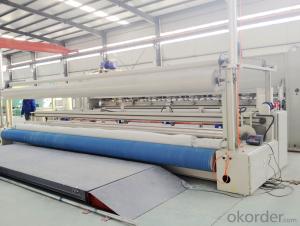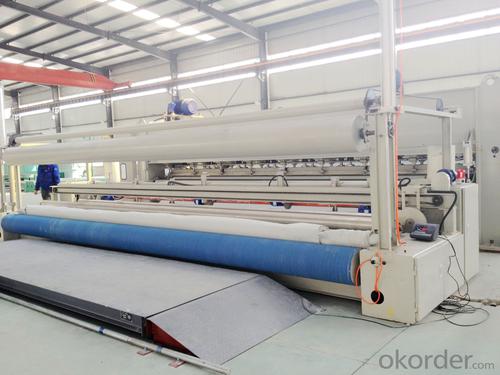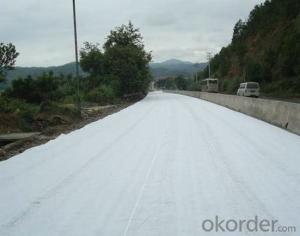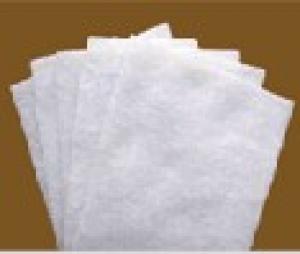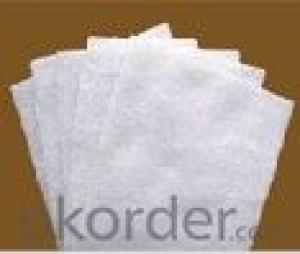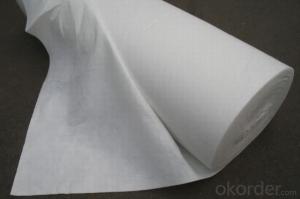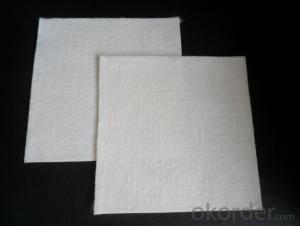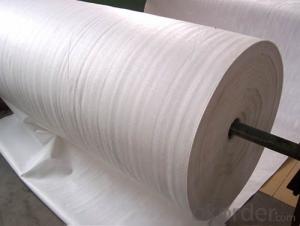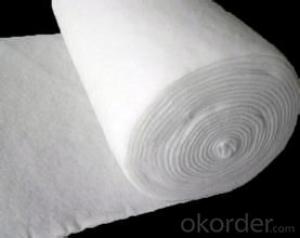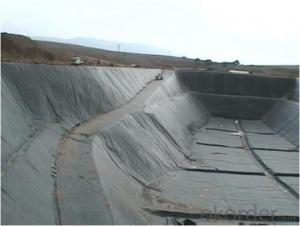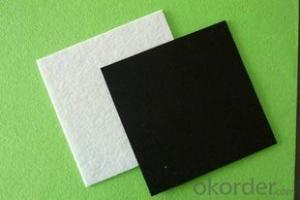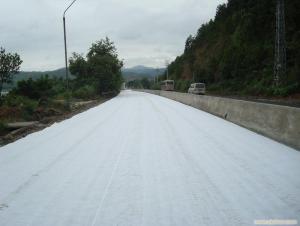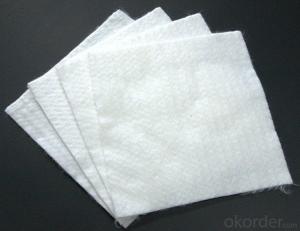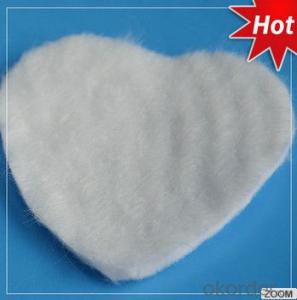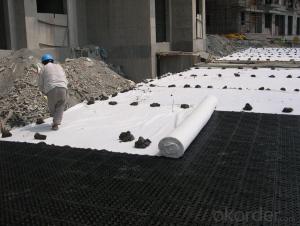Filament Non Woven Geotextile for Environmental Protection - Geotextil Grk3
- Loading Port:
- Qingdao
- Payment Terms:
- TT OR LC
- Min Order Qty:
- 10000 m²
- Supply Capability:
- 300000 m²/month
OKorder Service Pledge
OKorder Financial Service
You Might Also Like
Description Of Filament Non Woven Geotextile:
It prevents the bank from being washed out, protects the bank and the bottom, prevents the water and soil from being washed away.
Main Features of Filament Non Woven Geotextile:
The filtration layer of the dykes, river canal, seacoast, concrete slope, retaining walls. At the same time of preventing the clay granule from passing, it allows the water and the gas pass through freely.
(1) artificial filling foundation movement of ground water.
(2) gravel filter layer surrounding the periphery of the drain pipe drain.
(3) in water conservancy projects wells, relief wells or inclined pipe filter.
(4) for retaining wall backfill reinforcement, or for anchored retaining wall panel.
(5) reinforced flexible pavements, crack repair roads, prevent the reflection cracks of pavement.
(6) in ternal vertical or horizontal drainage, dissipation of pore water pressure in soil.
Specifications of Filament Non Woven Geotextile:
The isolation of the railway dregs and the roadbed, roadbed and the soft base, surface of the
airdrome and parking lot and the groundsill, different dam materials. It isolates the soil and the gravel of two kinds different granule pathway from the groundsill or other buildings.
Applications of Filament Non Woven Geotextile:
The highway, railway, soil-stone dam, breakwater, airport, backfill soil of retaining wall, slope protection, etc in which distributes the earth stress, prevents the side-displacement of the earth body and improves the earth body stability.
IMages of Filament Non Woven Geotextile:
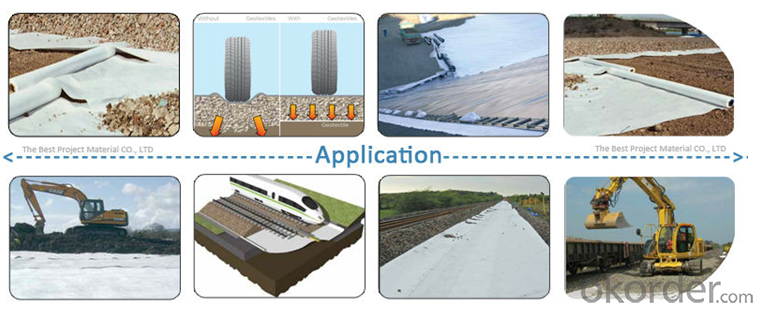
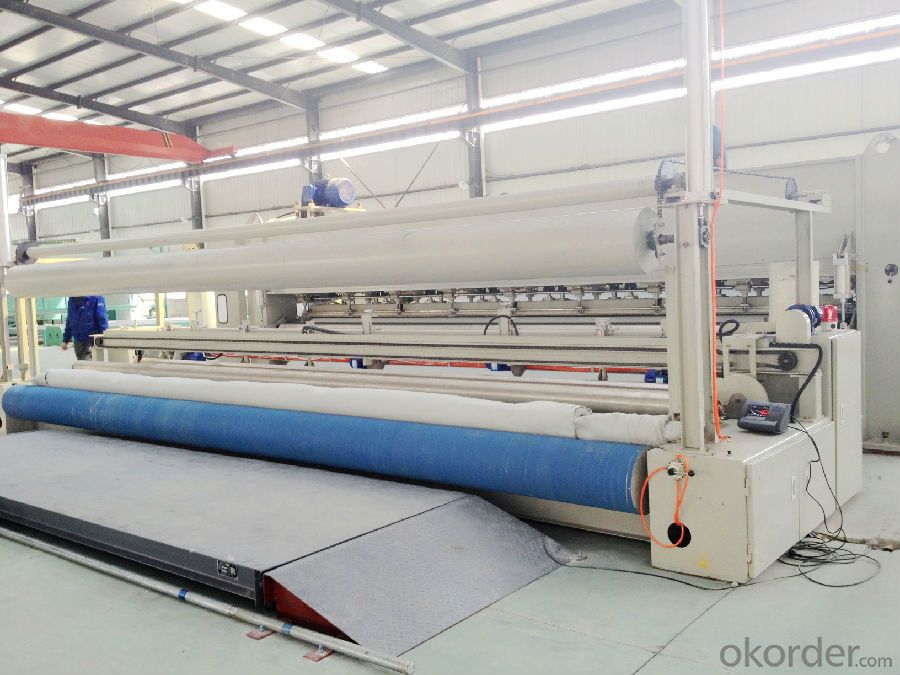
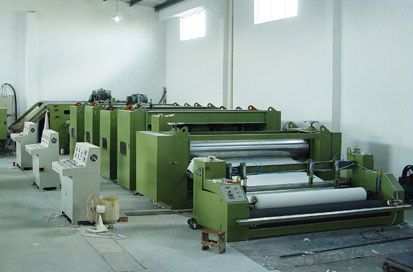
FAQ:
1. Do you supply free samples for customers?
Yes,we will supply free samples for you.Please send your address for us.
2. How Many years experience do you have?
We have been exported to more than 20 countries in the past 15 years.
3. How long do we usually reply your request?
We always reply our customer within 24 hours.
- Q: How do geotextiles help in preventing soil erosion in construction sites?
- Geotextiles help prevent soil erosion in construction sites by acting as a barrier between the soil and any external forces, such as wind or water. They stabilize the soil, allowing for proper drainage while also preventing the loss of soil particles. Additionally, geotextiles provide reinforcement to the soil, reducing the potential for erosion and ensuring the stability of the construction site.
- Q: Are geotextiles suitable for use in railway ballast stabilization?
- Yes, geotextiles are suitable for use in railway ballast stabilization. Geotextiles can improve the stability and performance of railway ballast by preventing the mixing of ballast and subgrade soils, reducing track settlement, improving drainage, and enhancing overall load-bearing capacity. They also help in reducing maintenance needs and increasing the lifespan of the railway tracks.
- Q: The vertical permeability coefficient of 400 g per square filament geotextile is generally how much
- 1.0 × 10-1cm / sK × (10-1-10-3) I specialize in the production of geotechnical materials
- Q: Can geotextiles be used in shoreline erosion control projects?
- Yes, geotextiles can be effectively used in shoreline erosion control projects. Geotextiles are permeable fabrics that can be installed along shorelines to stabilize the soil and prevent erosion caused by waves and currents. They can be used as a layer to separate the soil from the water, allowing for water filtration while reducing soil erosion.
- Q: Can geotextiles be used in oil and gas industry applications?
- Yes, geotextiles can be used in oil and gas industry applications. They are commonly used as a part of erosion control and sediment containment systems, providing stability and protection to the soil and preventing the migration of sediment into water bodies. Geotextiles can also be used in the construction of access roads, drilling pads, and pipeline trenches to improve their durability and reduce maintenance requirements.
- Q: Can geotextiles be used in erosion control blankets?
- Yes, geotextiles can be used in erosion control blankets. Geotextiles, which are permeable fabrics, are commonly used in erosion control blankets to prevent soil erosion by stabilizing the soil, reducing water velocity, and promoting vegetation growth. These blankets are typically made of biodegradable materials and are designed to provide temporary erosion control until vegetation is established.
- Q: Geotextile 0.2 and 1.0 which is more sunscreen
- 1.0 more sunscreen
- Q: What are the maintenance requirements for geotextile installations?
- The maintenance requirements for geotextile installations typically involve regular inspection to ensure the fabric is intact and functioning properly. Any signs of damage or deterioration should be repaired or replaced promptly. Additionally, geotextiles may require occasional cleaning to remove debris or sediment that can affect their performance. Overall, proper maintenance practices can help prolong the lifespan and effectiveness of geotextile installations.
- Q: How do geotextiles help in separating different soil layers?
- Geotextiles help in separating different soil layers by acting as a barrier between the layers, preventing their intermixing. The geotextiles have a permeable structure that allows water to pass through while retaining the soil particles, thus maintaining the integrity of each layer. This separation is crucial in various applications, such as road construction, landscaping, and erosion control, as it enhances the stability and performance of the soil layers.
- Q: How do geotextiles help in stabilizing slopes for pipeline construction?
- Geotextiles help in stabilizing slopes for pipeline construction by providing reinforcement and erosion control. They are placed along the slope to prevent soil erosion and promote stability. The geotextiles act as a barrier, preventing the movement of soil particles and reducing the risk of slope failure. Additionally, they enhance the soil's strength and increase its resistance to erosion caused by water flow. Overall, geotextiles play a crucial role in maintaining the stability of slopes during pipeline construction.
Send your message to us
Filament Non Woven Geotextile for Environmental Protection - Geotextil Grk3
- Loading Port:
- Qingdao
- Payment Terms:
- TT OR LC
- Min Order Qty:
- 10000 m²
- Supply Capability:
- 300000 m²/month
OKorder Service Pledge
OKorder Financial Service
Similar products
Hot products
Hot Searches
Related keywords
